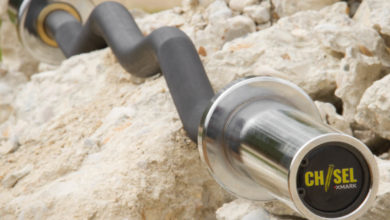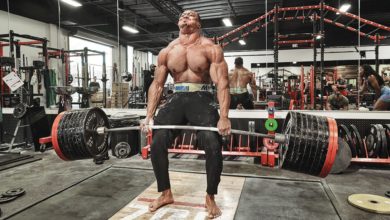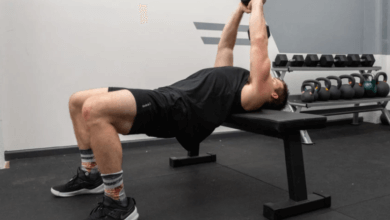DIY Lat Pulldown Bar – The Ultimate Guide To A Homemade Lat Pulldown Machine
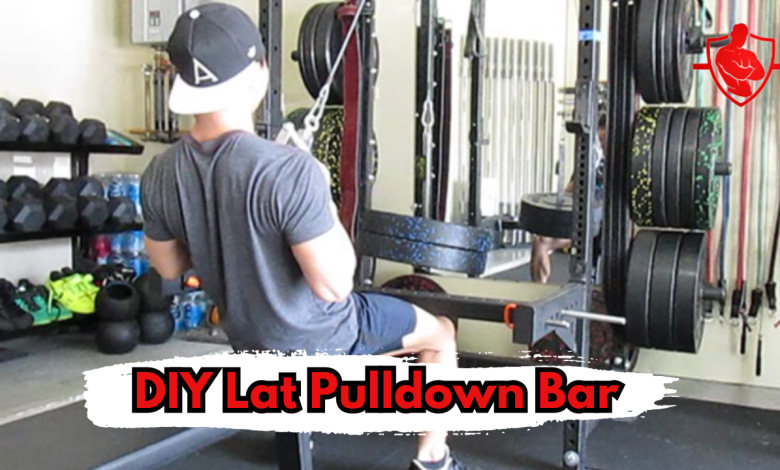
The lats! One of the most essential, yet among the most overlooked muscle groups in the human body.
If you’ve been skimping on this part of your body, don’t worry, it happens to more people than you think.
Take a look at the human anatomy, and it doesn’t take long to figure out why the lats often go unnoticed or underworked...
...And sometimes, well, simply abandoned as guys (and girls) focus on major muscle groups.
This muscle group is hard to target, and quite tough to build.
But then, if you have a power rack with lat pulldown bar, this won’t have to be the case, since this workout equipment helps you hit this muscle to the max…
There’s a catch though, if you don’t have this bar, you might be struggling to figure out how to target your lats.
Worry not, that’s why I’m here today, to share with you some ingenious ways you can work your lats without the lat pulldown bar.
And yes, for the DIY freaks out there, I’ll share details on how you can build one for your home gym.
Stick around!
How do You do Lat Pulldowns at Home?
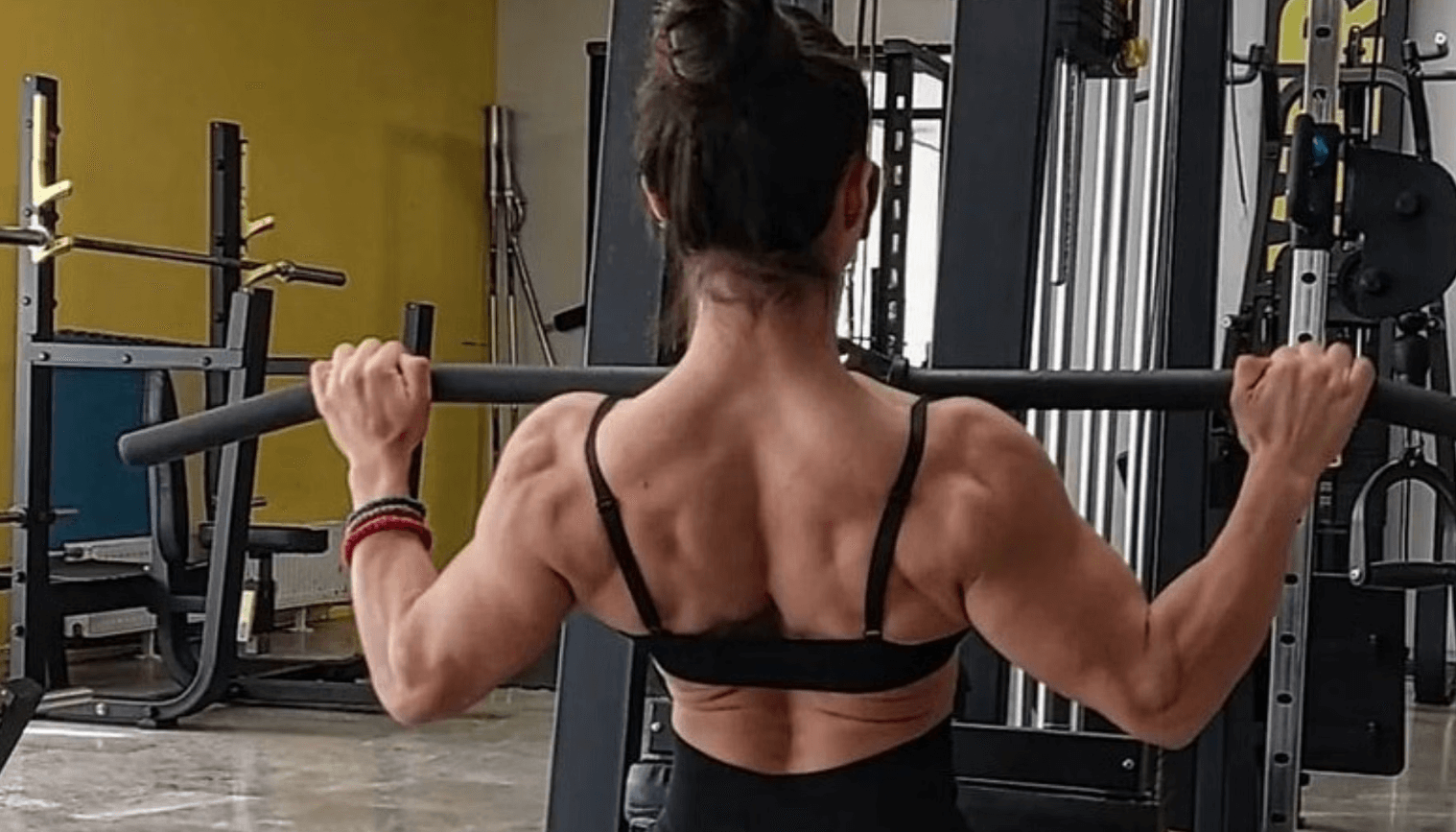
There’s only one way to do lat pulldowns at home really, and that’s on the lat pulldown machine – either a pro one or a DIY homemade version.
However, if you don’t have either of these, you don’t have to give up on your dream to build your lats. That’s where you need to get a bit creative.
How do You do Lat Pulldowns Without a Machine?
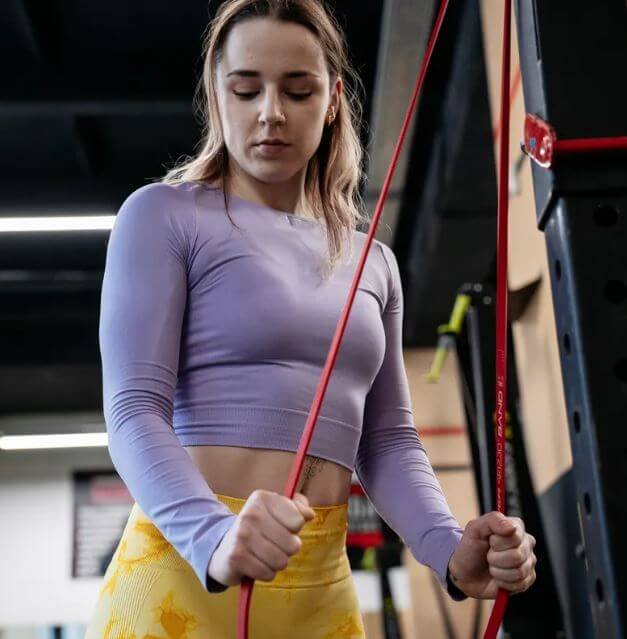
So, you don’t have a lat pulldown machine, nor any idea how you can get some workout in? Luckily, there’s a way out. With the following workouts, you can get pretty much the same results someone with a machine would.
Lat Pull-down with Resistance Bands

This is as closest as you can get to replicating the experience of using a lat pulldown machine. Using resistance bands to grow my glutes, biceps and triceps during my workout has become a personal favorite of mine. But the best part is that you can also use them for the lats.
Resistance bands come in varying strengths, which allows for users of different fitness levels, you can even count on them to scale up the resistance as you become stronger. Besides, all you’ve got to do is attach the bands to a sort of overhead base, then you can get down to it.
This is how you do lat pull-down using resistance bands;
- Start by gripping the middle of your band with both hands
- Keeping your arms straight and the palms facing outside, hold your band over the head.
- Bend the elbows as you separate your hands to lower the band and draw it toward your chest
- Hold it there for two or three seconds before returning to the starting position.
You can do this when standing or sitting, your call!
Straight-arm Pull-down
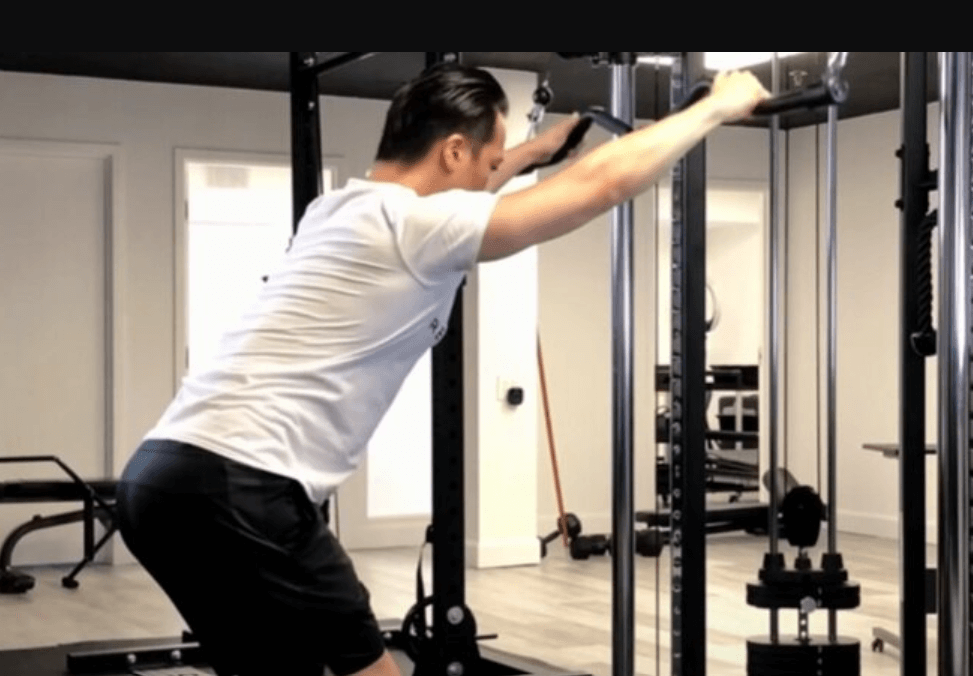
Here’s another great workout for targeting your lats that you can do with resistance bands positioned on an overhead base. Here's how to do straight-arm pull-down;
- Start with each hand holding one end of your band while keeping the elbows straight.
- Pull down as you draw your hands towards your hip area.
- Return to the starting position.
Repeat for the desired number of reps.
Pull-ups
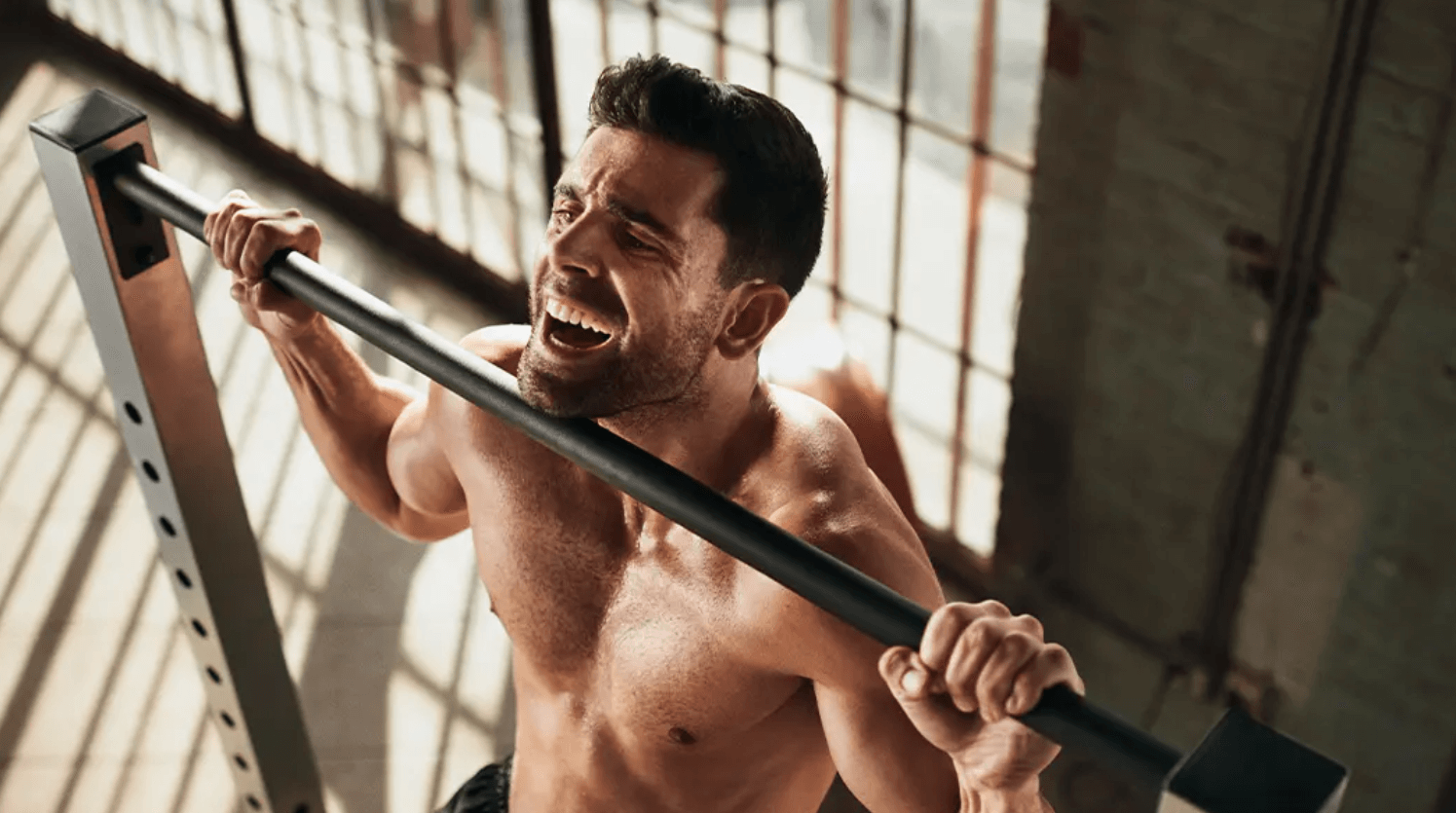
So, what happens if you don’t have a lat pulldown machine or a set of resistance bands? You use your body’s weight, that’s what. And pull-ups are among the most effective workouts for this. And not just lats, if done right, pull-ups also work your biceps and triceps.
Start by gripping tightly onto an overhead bar using both hands at shoulder width apart.
Bending your elbows, pull yourself upward to the bar until the chin rises above it.
Now, lower yourself down, slowly.
That’s one rep, repeat for the desired number of reps. How many pull ups you can do depends on your individual strength and fitness level.
Personally, I was fortunate enough to be able to do five pull-ups initially, and then gradually worked my way up to doing 20 pull ups per day.
Currently, I am able to do an impressive 50 pull ups per day. It's truly amazing what the human body can achieve with the right mindset and dedication.
How to Make a Lat Pulldown at Home

Now if you have a way with tools, and you’ve got some components that you can use for this, you should be able to build a handy homemade lat pulldown.
The Components
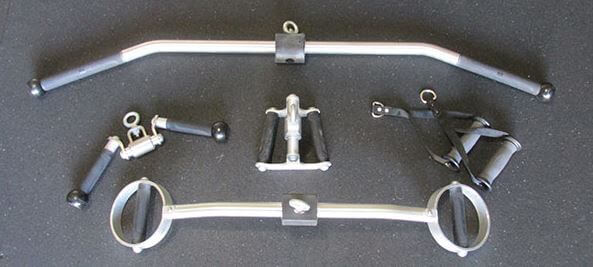
For a makeshift lat pulldown machine, here are some of the main components that you’ll need;
- An anchored half rack, small power rack, or rig.
- Flat utility bench or a chair
- 2 Wall ceiling mount pulleys – check weight rating and whether it’s recommended for overhead lifting
- 3 16-inch cables – check the rating to match your weight needs
- 2 3/16 inch wire or cable thimbles
- 4 3/16 inch cable clamps
- 4 ¼ inch hex bolts – 2 inches long
- 3 ¼ hex bolts – 5 inches long
- 6 ¼ inch hex nuts
- 8 ¼ washers
- A 4-foot long piece of ½-inch square steel tube
Procedure
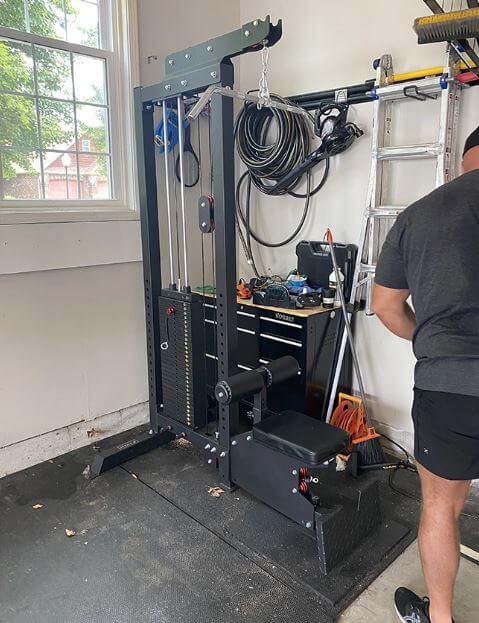
Mark and drill 2 ¼ inch holes for the pulleys – the locations of the pulleys will depend on the size of the squat rack where you’re attaching your lat pulldown.
Now with your bolt, washer, and nut, attach your pulley to the tube – making sure to insert the bolt in the pulley and then into the tube first (this way any excess length of the bolt won’t get in the way of the cable during use).
Drill a ¼-inch hole on your half rack, power rack, or rig. When drilling from underneath the rig, always ensure to wear eye protection gear – you don’t want to end up with a metal shaving in the eye.
Before drilling the second hole on the rig, bring the tubing to the rig to measure and mark where to drill the hole for precision. At this point, you also need to figure out the positioning of the pulleys.
You can have one pulley (where the handle will be attached) sit outside the rig, and the other pulley (where the weight stack will go) sit on the inside – between the arms of the rig.
With the positions for the pulleys determined, take the tubing and drill ¼ inch hole for the pulley attachment. Repeat after determining the location of the second pulley’s hole.
Now attach the pulley on the rig, remembering to stick the bolt from underneath so the excess length of the bolt won’t get in the way of the cable.
After checking to ensure there are no obstructions, go ahead and attach the cable to the pulleys and create the loops at the ends of the cable. It might take a bit of fidgeting to get the length right.
After finding that sweet spot for the loops, attach your thimble and the cable clamps. You can have two cable clamps on each end, with one facing away from the other.
Now take a pair of carabineers, use one for attaching the pulldown handle, and the other for attaching the weight stack. You can find these on Craiglist for cheap (perhaps someone selling a used one)
Also, you will need a loading pin to attach the weights. But you can always use a piece of chain if you don’t have a handy pin – just loop the chain through the middle of the weights and then attach it to the carabineer.
Just trim or loop up any excess cable – but if you take measurements beforehand, it should fit just fine, better to have a longer cable than a short, insufficient one though.
The only other thing you need at this point is a bench, or a chair to sit on when performing the pulldown. In case you feel the weight pulling you upwards, a quick fix would be to overturn the spotter arms on your rig.
It’s more of a compromise that should simulate a kneepad on a commercial lat pulldown. Sure, it might not be very comfy, but hey, it gets the job done.
For a visual of the entire process, check out this video right here:
What Exercise Can Replace Lat Pulldown?
There's a variety of exercises you can turn to if you don't have a lat pulldown machine.
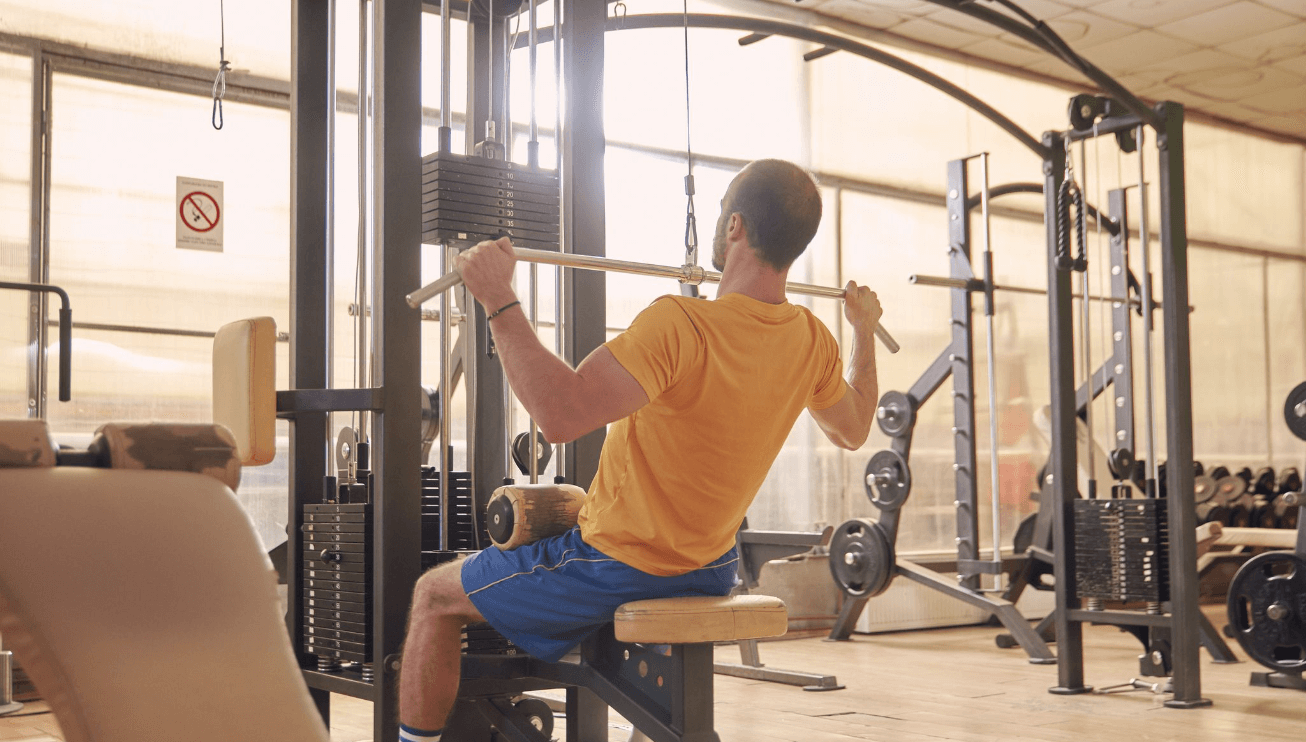
For those who don’t have a lat pulldown machine, and are unable to build one at home themselves, there are still several workouts that you can do instead.
You can also do these if you have the lat pulldown machine but you just want to try a different variation.
Not so fast though, before jumping head over heels, here are several boxes that a good lat pulldown alternative should check;
- It should specifically hit the latissimus dorsi muscle (lats).
- It should target pretty much the same muscle groups that you would with a lat pulldown machine.
Speaking of which, you could be asking yourself, what exactly are the muscles worked by the lat pulldown? The lat pulldown mostly works 4 muscle groups;
- Biceps
- Triceps
- Rhomboids
- Latissimus dorsi
That said, here are some of the best lat pulldown alternative exercises that you can do to target your lower and upper lats, as well as these other three muscles.
Single-arm Cable Pulldown
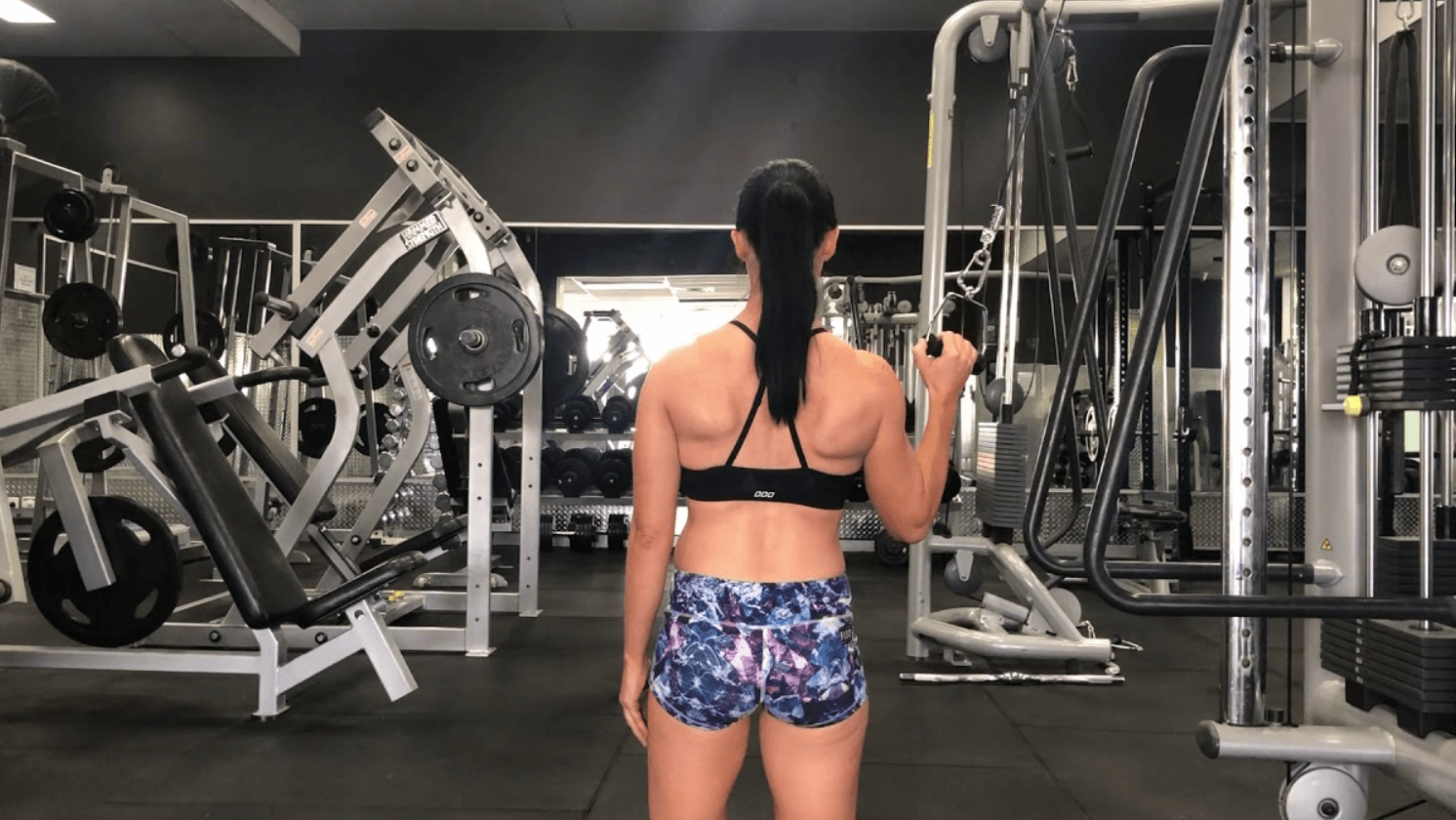
This workout makes for a great variation of the lat pulldown, and it works great for training one side of the back at a time.
Benefits
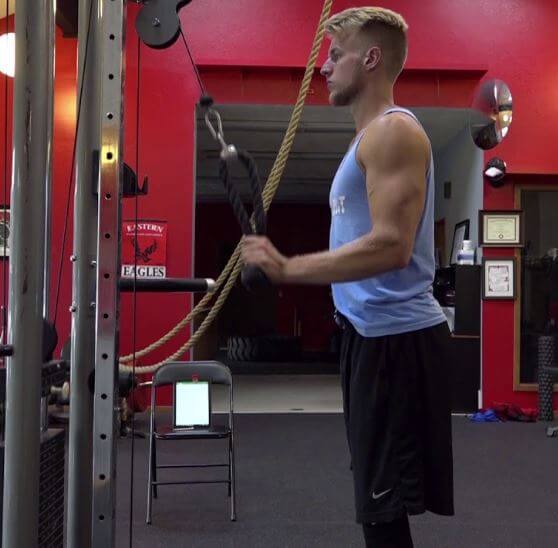
- It’s great for correcting muscle imbalances.
- It offers a better range of motion than the standard pulldown workout
Chest Supported Pulldown
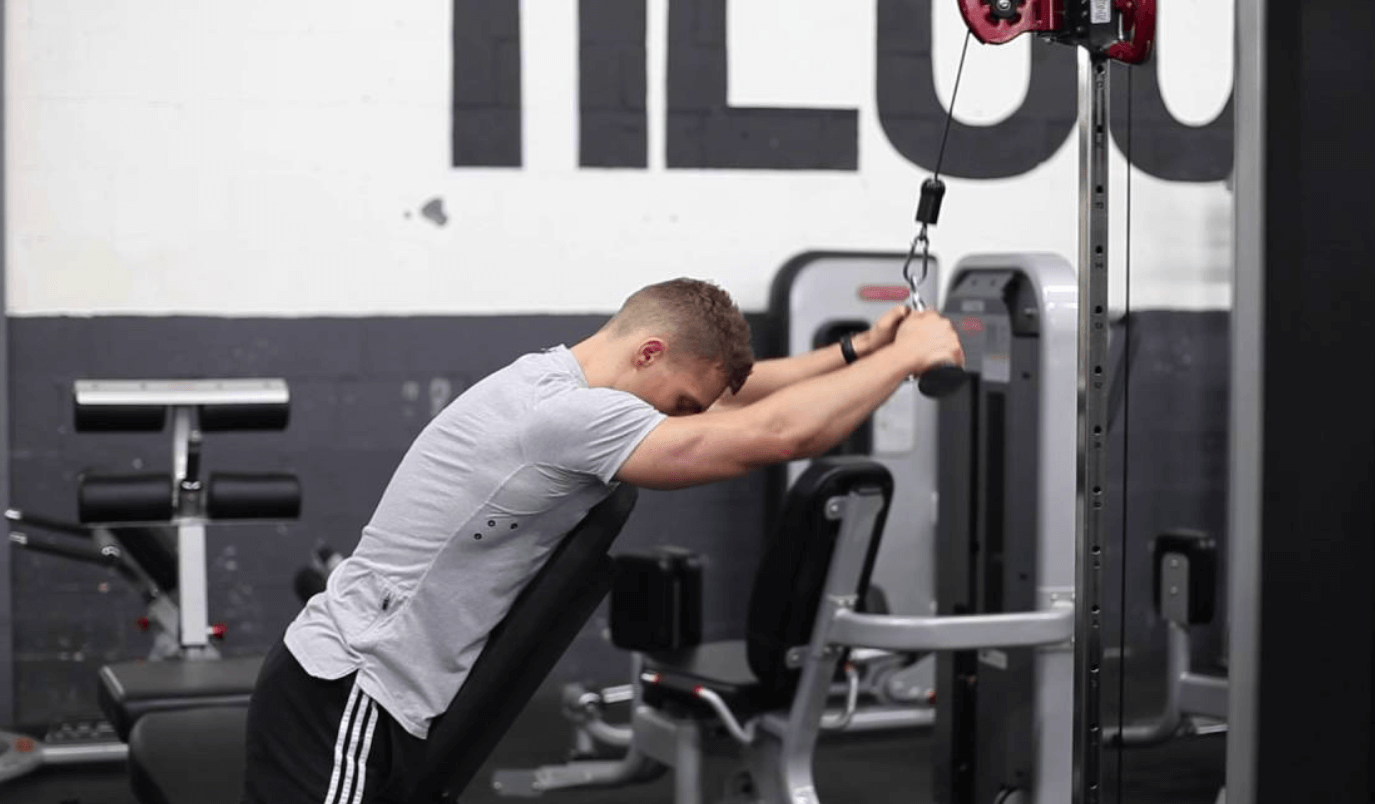
If you often swing your midsection, overextend your lower back or struggle to maintain a mind-muscle connection during lat pulldown, then try the chest-supported version of the workout.
Benefits of the chest-supported pulldown
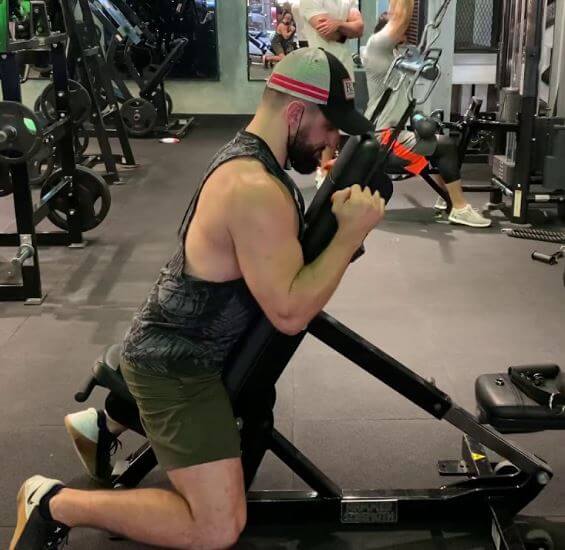
- It offers extra support for better technique
- The chest pad keeps you from inducing momentum during the workout
Lat-Biased Dumbbell Row
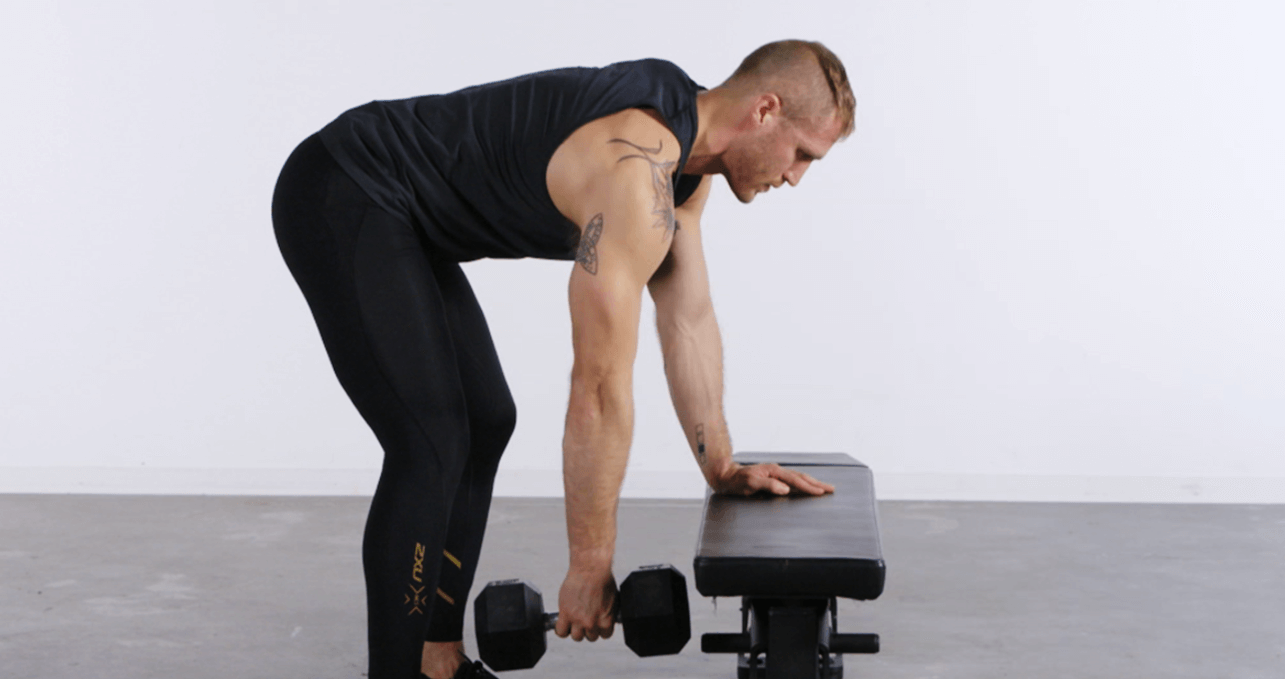
If you’re a lover of free weights, this one is an ideal alternative for you. It’s more like your average dumbbell row, the only difference being you adjust the form so you can hit the lats a lot more.
Benefits of the Lat-Biased Dumbbell Row
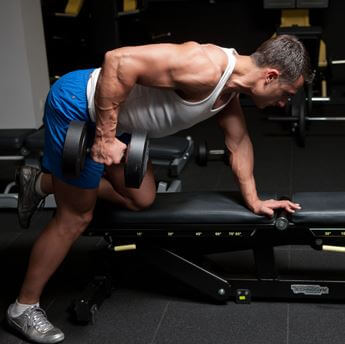
It allows you to put your core stability through its phases
You get to target the lat muscles directly without using very heavy weights
It enables you to fix muscular imbalances as you can work one side of your back at a time.
The Wrap-Up

If you don’t have a lat pulldown machine, now you can build one for way cheaper.
You’ll still need to splurge on the components, but hey, you can't compare the overall expenditure for these to the cost of a commercial lat pulldown machine.
If you are not a handy person, then the alternative exercises that I have shared with you above should enable you to work your lats and other muscles for virtually similar results.
So, which is it going to be? Are you getting down and dirty with a DIY build or would you rather do the alternative exercises? Let me know in the comments section below
Related Articles:
- Lat Pulldown vs Seated Row
- Low Row Exercise: How it Works, How to Do It, how You can do it at Home
- How to Build Core Strength from Nothing
- Stopped Working Out For a Year: Here Is What Happened
- Should You Workout 6 Days a Week?
Resources;
Ben Mayz
Hi there! I'm Ben, main author and chief editor at Fitlifefanatics.com. I have been obsessed with Strength Training and Fitness for 18 years now.
My passion for living a happy fit lifestyle is what made me realize that fitness is what I wanted for my future.
I went on to earn my Masters in Sports Training & Biomechanics.
My passion for Strength training & fitness and my love of helping others is what made me start Fitlifefanatics.
Here, myself, and a team of specialist aim to provide the most accurate, and actionable information possible in hopes to help foster the fitness community forward.
You can learn more about Fitlifefanatics on our About Page
